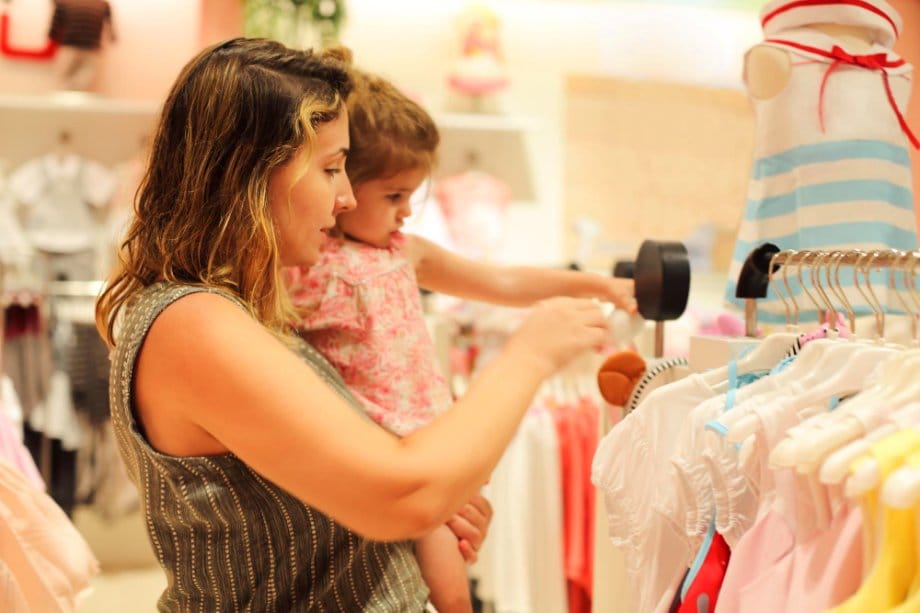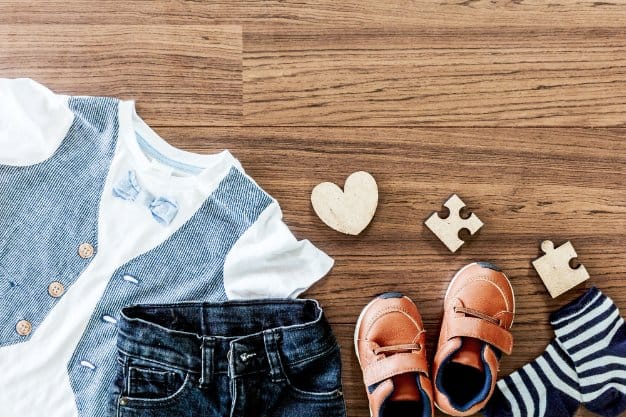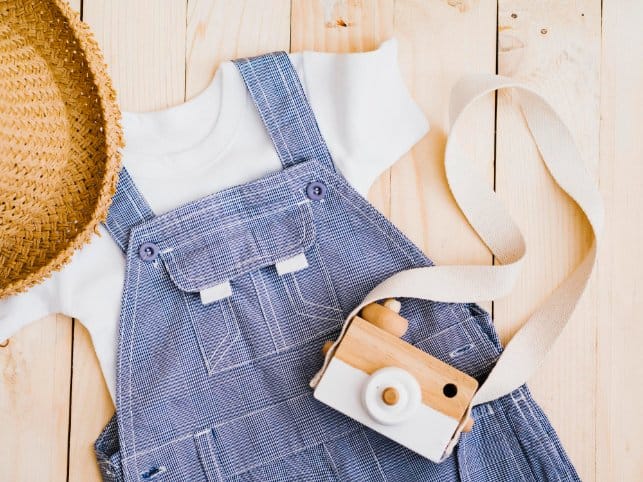Expert insights on selecting quality clothing that withstands active toddler life while keeping your little one comfortable and safe
Table of Contents
- Why Durability Matters for Toddler Clothes
- What is the Best Material for Toddler Clothes?
- Understanding Fabric Types for Maximum Durability
- 2025 Brand Comparison: Quality vs. Price
- Safety Standards and Non-Toxic Fabrics
- Easy Dressing Features for Independent Toddlers
- Seasonal Adaptability and Layering
- Balancing Style with Functionality
- Key Durability Features to Look For
- Sizing Considerations and Growth Planning
- Why Easy-to-Maintain Fabrics Are Essential
- Sustainable and Organic Options
- Frequently Asked Questions
- Conclusion
Why Durability Matters for Toddler Clothes
Finding the right clothes for your active toddler can feel like solving a puzzle. Toddlers are constantly on the move, exploring their world through climbing, crawling, and often falling. When choosing durable clothes for toddlers, focus on reinforced knees, strong seams, and flexible fabrics that can withstand daily adventures while allowing freedom of movement.
Market Insights: The $265 Billion Industry
The global toddler wear market was valued at $265.71 billion in 2024 and is projected to grow at a CAGR of 7.0% through 2030. In the United States alone, the children’s apparel market is expected to generate $76.41 billion in 2024, with an average of 13.2 pieces purchased per child annually.
The right clothing choices can save you both money and frustration. By investing in quality pieces that last longer, you’ll build a wardrobe that can handle everything your little one throws at it. Plus, clothes that are easy to put on and take off will make your daily routine much smoother. To calculate the true value of clothing purchases and make smart investment decisions, try our price-per-wear calculator.
What Sort of Clothing Should a Toddler Wear?
Toddlers need clothing that supports their active lifestyle while ensuring comfort and safety. The ideal toddler wardrobe includes:
- Play clothes: Durable everyday items that can handle rough play and frequent washing
- Comfortable basics: Soft, breathable fabrics that move with your child
- Weather-appropriate layers: Adaptable pieces for changing conditions
- Easy-to-dress items: Features that support independence as toddlers learn to dress themselves
What is the Best Material for Toddler Clothes?
The best materials for toddler clothes combine durability, comfort, and safety. Based on current market research and safety standards, here are the top fabric choices:
Top Material Recommendations
| Material | Durability | Comfort | Safety | Best For |
|---|---|---|---|---|
| Organic Cotton | High | Excellent | Superior | Everyday wear, sensitive skin |
| Cotton-Polyester Blend | Very High | Good | Good | Play clothes, durability focus |
| Bamboo | High | Excellent | Excellent | Temperature regulation, eco-conscious |
| Merino Wool | High | Excellent | Good | Cold weather, natural temperature control |
Is Bamboo or Cotton Better for Babies?
Both bamboo and cotton have unique advantages for toddler clothing:
Bamboo advantages:
- Naturally antimicrobial and odor-resistant
- Superior moisture-wicking properties
- Incredibly soft texture, often softer than cotton
- Natural UV protection
- Eco-friendly and sustainable production
Cotton advantages:
- Widely available and affordable
- Easy to care for and maintain
- Excellent breathability
- Hypoallergenic when organic
- Durable with proper care
Winner: For most toddlers, organic cotton remains the gold standard due to its balance of comfort, durability, and accessibility. However, bamboo is excellent for children with sensitive skin or for parents prioritizing sustainability. To compare these and other fabric options in detail, use our fabric comparison matrix tool for personalized recommendations based on your priorities.
Understanding Fabric Types for Maximum Durability
What Are the Most Durable Fabrics for Toddler Clothes?
Fabric choice greatly impacts how well toddler clothes hold up to daily wear and tear. Different materials offer various benefits from comfort to durability.
Cotton and Bamboo Fabrics
Cotton stands as the most popular choice for toddler clothing due to its natural softness and breathability. We recommend 100% cotton for sensitive skin as it reduces the risk of irritation and allergic reactions. Cotton is also highly absorbent, making it ideal for active toddlers who may sweat during play.
Bamboo has recently gained popularity as an eco-friendly alternative. Bamboo fabric is exceptionally soft—even softer than cotton—while offering natural moisture-wicking properties. It helps regulate body temperature, keeping kids cool in summer and warm in winter.
Both cotton and bamboo are easy to care for and can withstand multiple washes without losing shape. For everyday play clothes, cotton twill or denim provides extra durability while maintaining comfort.
Synthetic Fabric Blends
Polyester leads the synthetic fabric options for toddler clothing. Its exceptional durability and resistance to wrinkles, shrinking, and stretching make it valuable for active wear. Polyester-cotton blends retain bright colors even after many washes.
Nylon and acrylic also perform well in children’s clothing. These fabrics dry quickly and maintain their shape. Many modern synthetic blends incorporate elastane or spandex (5-10%) to add stretch, which works beautifully for active toddlers needing freedom of movement.
Important Consideration
Pure synthetic fabrics lack breathability and can cause toddlers to overheat during intense play. For everyday wear, prefer synthetic blends that incorporate natural fibers, saving 100% synthetic options for specific purposes like raincoats or swimwear.
Breathable Materials for Comfort
Breathable fabrics prevent overheating and reduce sweating, making them essential for toddler comfort. Always check the weave of fabrics—looser weaves allow better air circulation.
Cotton jersey knit offers excellent breathability and stretch, perfect for t-shirts and casual wear. Linen, while wrinkle-prone, provides superior breathability for hot weather clothing. Linen-cotton blends offer a good balance between coolness and wrinkle resistance.
Microfiber technology has created synthetic options that now offer improved breathability. These engineered fabrics wick moisture away from the skin while allowing air flow. For athletic or outdoor play clothes, these performance fabrics combine durability with comfort.
When shopping, test breathability by holding the fabric up to light—more visible light means better air circulation potential.
2025 Brand Comparison: Quality vs. Price
Based on comprehensive market research and parent reviews, here’s how top toddler clothing brands stack up in 2025:
Budget-Friendly Champions
Carter’s: “Synonymous with baby clothes” with consistent quality and frequent sales
Old Navy: Praised for “on-trend, adorable styles without the hefty price tag”
Wonder Nation (Walmart): “Significantly lower prices than other value brands without sacrificing style”
Mid-Range Quality
Hanna Andersson: “Hits that sweet spot of great patterns and high-quality fabrics”
Primary: “High-quality essentials in bold colors, with no glitter, slogans or licensed characters”
Budget baby clothes: Quality options for value-conscious parents
Premium Organic Options
Pehr: “Heirloom quality organic denim and corduroy”
Organic Zoo: “Durable, nature-inspired garments made for simple, imaginative play”
Manymoons: “America’s first circular fashion retailer” with rental and give-back programs
2025 Market Leaders: Parent-Tested Recommendations
Most Durable Overall: Hanna Andersson – “Comfortable yet sturdy, cozy enough to wear all day, but with a sturdy enough weave that they would make great hand-me-downs for generations to come.”
Best Value: Carter’s – Offers affordable, adorable, and durable baby clothes that survive daycare, play time, and nighttime.
Softest Materials: Kyte Baby – Makes the softest clothing available, though at premium pricing.
Most Sustainable: Organic Zoo and Pehr – Leading the charge in eco-friendly, durable children’s clothing.
Safety Standards and Non-Toxic Fabrics
When shopping for toddler clothes, safety certifications help ensure the garments are free from harmful chemicals and substances. These standards protect your child’s sensitive skin from potential irritants and toxins.
What Are Non-Toxic Fabrics for Kids?
Non-toxic fabrics for children are materials that have been tested and certified to be free from harmful chemicals, dyes, and treatments. Key certifications to look for include:
Essential Safety Certifications
- OEKO-TEX Standard 100: Tests every component for harmful substances
- GOTS Certified: Ensures organic fibers and ethical production
- CPSIA Compliant: Meets U.S. Consumer Product Safety Commission requirements
- Greenguard Gold: Low chemical emissions certification
OEKO-TEX Standard 100 Certification
The OEKO-TEX Standard 100 is one of the most widely recognized certifications for clothing safety. This certification guarantees that every component of the garment—from threads and fabrics to buttons and zippers—has been tested for harmful substances.
When shopping for toddlers, always look for the OEKO-TEX label. It provides confidence that the clothing is free from pesticides, lead, formaldehyde, and other chemicals that could irritate your child’s skin.
Products with this certification are tested for:
- pH levels and formaldehyde content
- Heavy metals including lead and mercury
- Pesticides and herbicide residues
- Flame retardants and allergens
- Carcinogenic substances
The testing standards are especially strict for clothing intended for children under 3 years old, making OEKO-TEX certified clothing a smart choice for toddlers with sensitive skin or allergies.
Why Do Zara Kids Clothes Say Keep Away from Fire?
You might notice warnings on children’s clothing, including some from Zara, that say “keep away from fire.” This warning is required by law for certain types of children’s clothing that haven’t been treated with flame-retardant chemicals.
According to the U.S. Consumer Product Safety Commission (CPSC), children’s sleepwear must either:
- Be made from naturally flame-resistant fabrics like cotton, or
- Be treated with flame-retardant chemicals, or
- Be labeled with fire safety warnings if they don’t meet flame-resistance standards
Many parents prefer clothing with the warning label rather than chemically treated fabrics, as flame-retardant chemicals have raised health concerns. The key is to follow safe practices: keep children away from open flames, candles, and heat sources regardless of their clothing.
Easy Dressing Features for Independent Toddlers
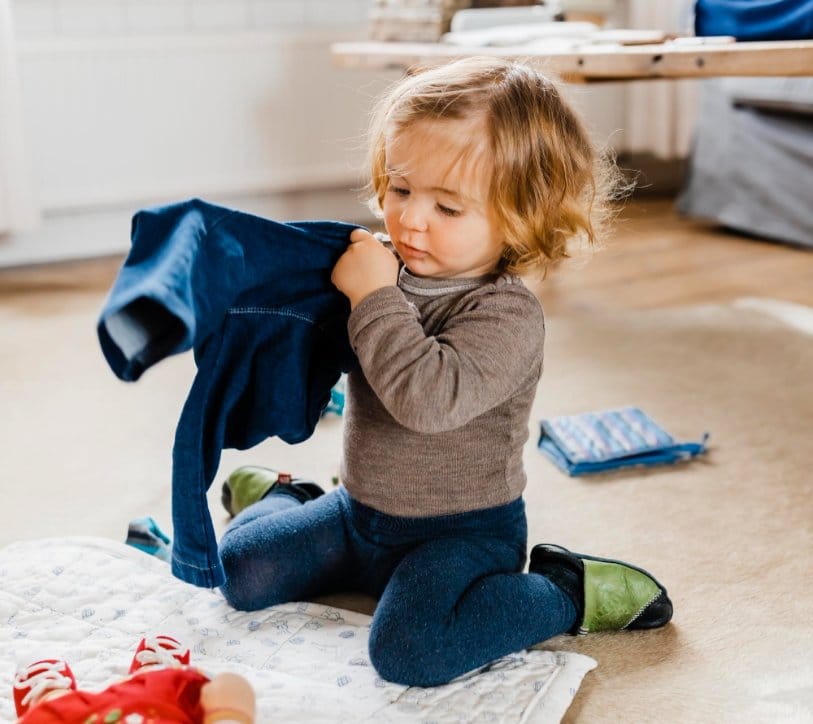
Choosing clothes that are easy to put on and take off can save time and reduce struggles during dressing. This aspect becomes especially important as toddlers develop independence and want to dress themselves.
At What Age Do Toddlers Put Their Own Clothes On?
Most toddlers begin showing interest in dressing themselves between 18 months and 2 years, with significant progress by age 3-4. The timeline varies by child, but here’s what to expect:
| Age Range | Dressing Milestones | Clothing Features to Support |
|---|---|---|
| 18-24 months | Removes shoes, socks, hats | Slip-on shoes, loose-fitting items |
| 2-3 years | Puts on simple clothing items | Large openings, elastic waistbands |
| 3-4 years | Dresses with minimal help | Front-fastening, visible buttons |
| 4-5 years | Independent dressing | Standard closures, laces |
Convenient Features for Easy Dressing
When shopping for toddler clothes, look for items with elastic waistbands on pants and shorts. These make it much easier for little ones to pull them up and down by themselves, which is helpful during potty training.
Avoid clothes that need to be pulled over the head if your child dislikes this sensation. Instead, choose tops that have shoulder snaps or extended necklines that stretch easily.
Front closures work better than back closures for independent dressing. Look for:
- Large buttons that small fingers can manage
- Magnetic closures for easy fastening
- High-quality velcro that children can operate
- Snap buttons at appropriate spacing
For shoes, slip-on styles or those with velcro closures work better than laces. This allows toddlers to practice putting their shoes on without frustration.
Choose clothes with smooth tags that don’t itch and minimal decorations to prevent discomfort and distraction during dressing time.
Why Do Toddlers Always Take Their Clothes Off?
It’s completely normal for toddlers to remove their clothes frequently. This behavior stems from several developmental factors:
Common Reasons Toddlers Undress
- Temperature regulation: Toddlers can’t regulate body temperature as effectively as adults
- Sensory preferences: Some fabrics or fits may feel uncomfortable
- Independence assertion: Removing clothes is something they can control
- Comfort seeking: They may prefer the feeling of being unclothed
- Attention seeking: Sometimes it’s a way to get a reaction
- Developmental phase: Normal exploration of their bodies and environment
To minimize unwanted undressing, choose clothing that feels comfortable and isn’t too tight or restrictive. Soft, breathable fabrics reduce the likelihood of discomfort that leads to clothing removal.
Seasonal Adaptability and Layering
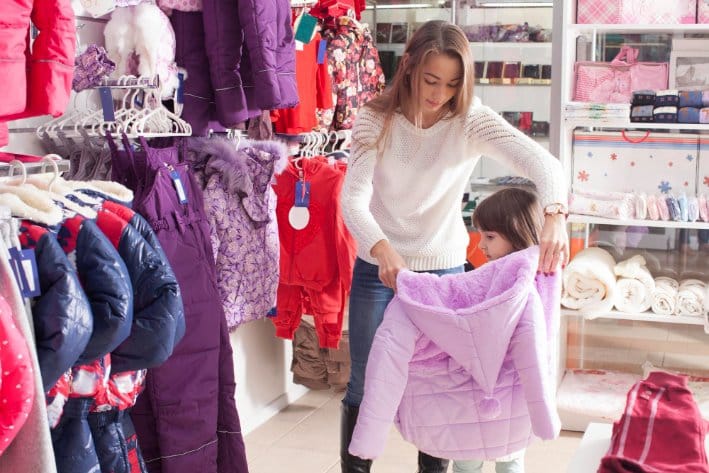
Adaptable clothing helps toddlers stay comfortable in changing conditions and supports their active lifestyle. The right adaptable pieces can grow with your child and adjust to different weather situations.
Layering Essentials for Year-Round Comfort
Layering is key for keeping toddlers comfortable throughout the day. Start with a soft, breathable base layer that sits against the skin without irritation. Cotton t-shirts or bodysuits work well for this purpose.
The middle layer should provide warmth. Lightweight sweaters or sweatshirts are excellent choices because they’re easy to put on and take off as needed. Look for stretchy fabrics that won’t restrict movement.
For outerwear, a good rain jacket is essential. Choose one that’s waterproof (not just water-resistant) with a hood that stays in place. Adjustable cuffs help keep water out while easy-to-use zippers allow toddlers to practice independence.
Consider size-adjustable features like roll-up sleeves, adjustable waistbands, and pants with cuffs that can be rolled down as your child grows. These elements extend the life of clothing.
2025 Seasonal Trends and Planning
According to current fashion forecasts, Spring/Summer 2025 will see:
- Floral dresses and lightweight linen shirts becoming staples
- Cotton co-ord sets rising in popularity for comfort and versatility
- Vibrant patterns making a strong comeback, adding energy to summer looks
- Gender-neutral designs in neutral colors and versatile styles
For Fall/Winter 2025, expect:
- Cozy layering essentials with improved functionality
- Sustainable materials becoming mainstream
- Athleisure continuing its dominance for active toddlers
- Retro influences blended with contemporary designs
To plan your clothing purchases strategically and take advantage of seasonal sales, use our seasonal shopping timeline tool for personalized recommendations.
Balancing Style with Functionality

When choosing toddler clothes, finding the right balance between cute designs and practical features is essential. The best toddler clothes combine appealing styles with functionality that makes parents’ lives easier and keeps children comfortable.
Functionality Over Fashion
Prioritize functionality when selecting toddler clothes. Look for pieces with wide neck openings or snap buttons that make dressing and undressing easier—especially helpful during diaper changes or potty training. Elastic waistbands on pants and leggings provide comfort and adjust to your child’s growth.
Consider clothes with reinforced knees, particularly for active toddlers who crawl or play outside. Easy-to-wear leggings are excellent basics to stock up on—they’re stretchy, comfortable, and work for both boys and girls.
Avoid clothes with small decorative elements like buttons or beads that could present choking hazards. Instead, choose items with printed or embroidered designs that won’t come loose.
Coordinated Outfits That Work
Matching outfits can make mornings less stressful while still keeping your toddler looking adorable. Purchasing coordinated sets saves time and eliminates the daily struggle of finding pieces that work together.
Mix-and-match collections are worth the investment. Look for items in complementary colors that can be combined in multiple ways. This approach creates more outfit possibilities from fewer pieces.
For busy parents, create a small capsule wardrobe of 5-7 tops and bottoms that all work together. This system makes getting dressed simple while still giving your child some choice in what they wear.
Neutral basics paired with a few patterned pieces offer versatility without compromising on style.
Key Durability Features to Look For
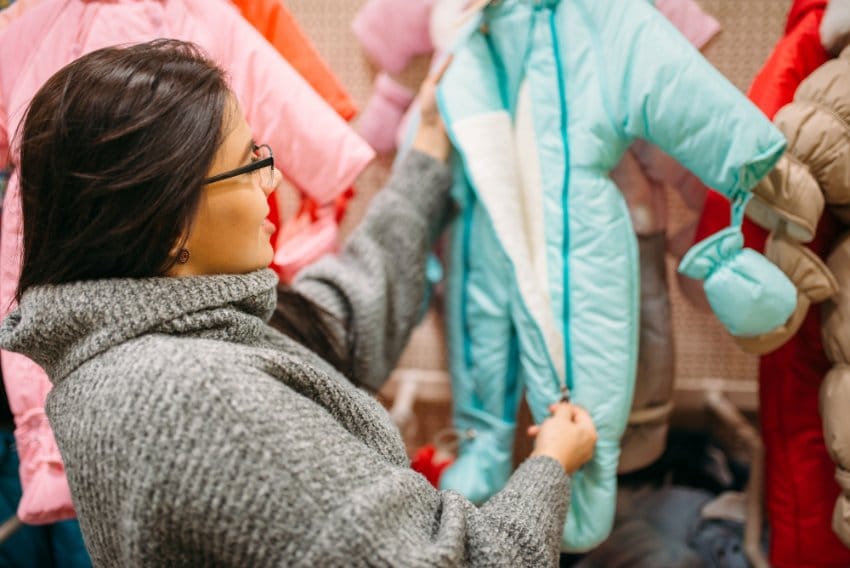
When shopping for toddler clothes, durability should be your top priority. Let’s examine what makes children’s clothing last through active play and multiple wash cycles.
Construction Quality Indicators
Reinforced seams make a huge difference in how long clothes last. Look for double-stitching at stress points like knees, elbows, and seat areas. These areas take the most abuse during crawling and playing.
Fabric quality matters tremendously. Choose tightly woven cotton, cotton-polyester blends, or denim for everyday wear. These fabrics withstand repeated washing without losing shape or color.
Pay attention to closures and fasteners. Snaps and elastic waistbands often outlast buttons and zippers for toddlers. They’re also easier for small hands to manage as children learn to dress themselves.
Quality Construction Checklist
- ✓ Double-stitched seams at stress points
- ✓ Reinforced knees and elbows
- ✓ Quality pockets that won’t tear
- ✓ Strong, securely attached fasteners
- ✓ Finished seam edges to prevent fraying
- ✓ Appropriate stretch that recovers well
Always check clothing construction before purchasing. Strong pockets, reinforced knees, and quality stitching indicate clothes that will last through hand-me-downs.
Washability and Care Requirements
Washability is crucial for toddler clothes. Select items that can be machine washed in warm water without special care requirements. Clothes requiring hand-washing or dry-cleaning aren’t practical for busy parents dealing with daily spills and stains.
Look for fabrics that maintain their color and shape after repeated washing. Pre-shrunk cotton items prevent size changes, while colorfast fabrics resist fading even after numerous wash cycles.
Sizing Considerations and Growth Planning
Baby clothes require unique attention to detail for safety, comfort, and practicality. Making smart choices early saves both money and frustration.
Understanding Toddler Size Progression
Babies grow incredibly fast, especially in their first year. Consider buying clothes slightly larger than needed to get more wear time. Many parents find that sizing up by 3-6 months is a good strategy.
| Age Range | Average Growth Rate | Sizing Strategy | Key Considerations |
|---|---|---|---|
| 0-12 months | Rapid (monthly changes) | Buy current size + next size | Focus on easy access for diaper changes |
| 12-24 months | Moderate (every 2-3 months) | Size up for seasonal items | Prioritize crawling/walking durability |
| 2-3 years | Slower (every 4-6 months) | Invest in quality pieces | Independence features become important |
Elastic waistbands and adjustable features are worth looking for. They allow clothes to fit longer as your baby grows.
When shopping, always check the fabric stretch. Stretchy materials like cotton with a bit of elastane adapt better to growing bodies.
Consider seasonal transitions too. A 3-month size might not fit when that season comes around again. Convertible options (like pants that become shorts) are particularly valuable for extending wear time.
Fold-over cuffs on sleeves and pants legs are helpful features. They can be unfolded as your baby grows taller.
Why Easy-to-Maintain Fabric Is Preferred for Toddlers
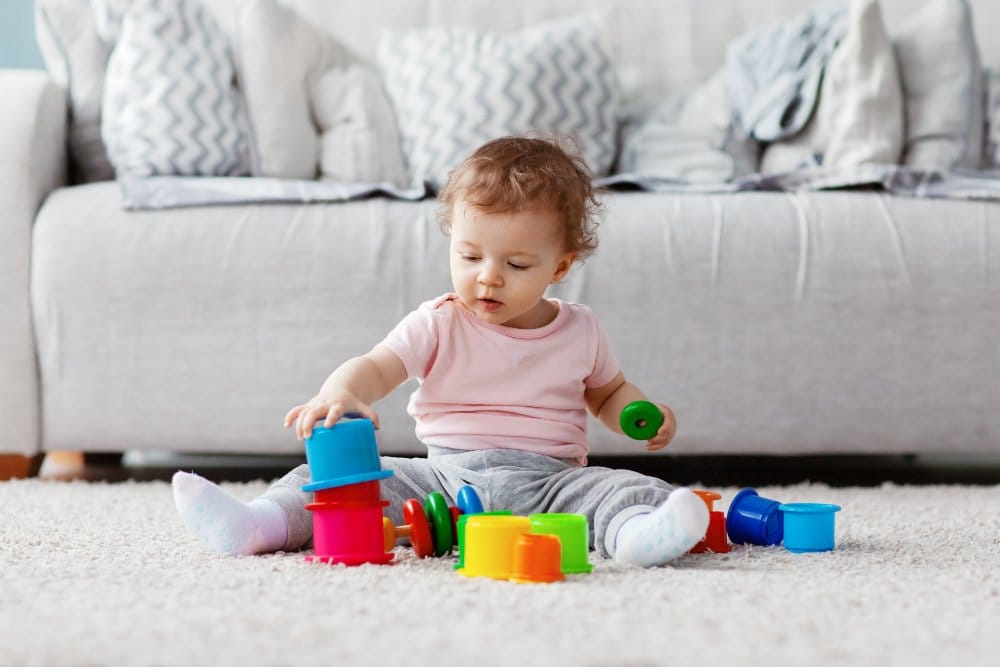
Easy-to-maintain fabrics are essential for toddler clothing because of the realities of active toddler life. Here’s why maintenance matters and how to choose wisely:
The Reality of Toddler Messes
Toddlers create an average of 2-3 clothing changes per day due to spills, outdoor play, and general messiness. Easy-care fabrics reduce the burden on parents while ensuring clothes remain hygienic and presentable.
Easy-Care Fabric Benefits
- Machine washable: No special handling required
- Quick-drying: Reduces laundry backlog
- Stain-resistant: Many spills wash out easily
- Colorfast: Colors don’t fade or bleed
- Wrinkle-resistant: Looks neat without ironing
- Shrink-resistant: Maintains fit after washing
Best Practices for Toddler Clothing Care
Follow these guidelines to maximize the lifespan of toddler clothes:
- Pre-treat stains immediately: The sooner you address stains, the better the outcome
- Wash in appropriate water temperature: Follow fabric care instructions
- Use gentle detergent: Toddler-safe detergents protect sensitive skin
- Air dry when possible: Extends fabric life and prevents shrinkage
- Store properly: Organized storage prevents damage
For busy families, consider having multiples of favorite items. This ensures you always have clean clothes available during heavy laundry periods.
Sustainable and Organic Options
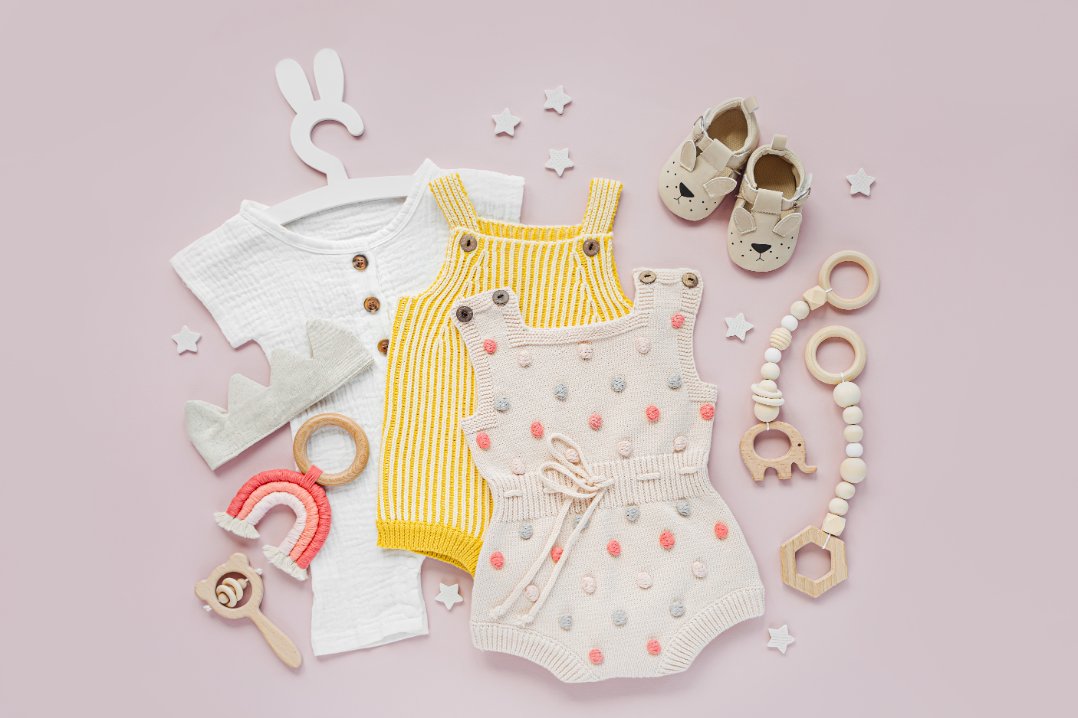
The children’s apparel market is experiencing a significant shift toward sustainability, with parents increasingly prioritizing eco-friendly and ethically manufactured clothing. Environmental concerns and child safety considerations are driving demand for organic fabrics and sustainable production methods.
The Rise of Sustainable Toddler Fashion
2025 marks a turning point for sustainable children’s fashion. Parents are becoming more conscious about where their kids’ clothes come from, leading toward ethical toddler clothing brands. This allows families to buy children’s clothes without compromising on ethics.
Sustainable Fashion Statistics
The global sustainable children’s apparel market is growing at 8.2% annually, with organic cotton demand increasing by 40% year-over-year. Parents are willing to pay 15-25% more for certified sustainable options.
Leading Sustainable Brands for 2025
| Brand | Sustainability Focus | Price Range | Key Features |
|---|---|---|---|
| Organic Zoo | Organic materials, ethical manufacturing | $45-85 | Designed in England, made by women-owned facility |
| Pehr | Heirloom quality, organic cotton | $35-75 | Durability tested, hand-me-down quality |
| Manymoons | Circular fashion, rental programs | $25-60 | Rescued from landfill, composting program |
| Mini Mioche | GOTS-certified organic cotton | $30-70 | Canadian-made, gender-neutral designs |
Understanding Organic Certifications
When shopping for organic toddler clothing, look for these key certifications:
- GOTS (Global Organic Textile Standard): Ensures organic fiber content and ethical production
- OCS (Organic Content Standard): Verifies organic material content
- OEKO-TEX Made in Green: Combines safety testing with social and environmental criteria
- Cradle to Cradle Certified: Assesses entire product lifecycle
These certifications ensure that clothing is not only better for your child’s health but also supports environmental and social responsibility.
Frequently Asked Questions
Strong fabrics are essential for toddler clothing durability. We recommend organic cotton, twill, denim, and linen as they withstand frequent washing and active play.
Fabric thickness matters too. Thicker materials generally last longer than thin, flimsy options that can tear easily during typical toddler activities.
Look for tight weaves that resist snagging and pilling. These fabrics maintain their appearance and structure even after multiple wash cycles.
Examine seams closely for straight, even stitching with no loose threads. Double-stitched seams provide extra reinforcement at stress points like knees and elbows.
Check buttons, snaps, and zippers by gently tugging to ensure they’re securely attached. Quality fasteners should feel sturdy and operate smoothly.
Turn garments inside out to inspect how edges are finished. Serged or bound seams prevent fraying and extend the life of the clothing.
Reinforced knees and seat areas indicate clothing designed for active play. Some brands add extra fabric layers or patches at these high-stress points.
Elasticity in cuffs and waistbands helps clothing keep its shape through repeated wear and washing. Good recovery prevents sagging and stretching out.
Check for flexible design elements that move with your child. Gussets in pants or raglan sleeves in shirts allow freedom of movement without straining seams.
Select clothing with growth features like adjustable waistbands and roll-up cuffs. These allow garments to fit longer as your toddler grows.
Consider buying one size up for seasonal items. This strategy works especially well for outerwear that can be used across multiple seasons.
Pay attention to proportions rather than just age recommendations. Brands vary in their sizing, so measuring your child’s height, weight, and waist is more reliable than following age guidelines alone. For accurate sizing across different brands, try our interactive toddler size chart tool to compare measurements and get personalized recommendations.
Look for colorfast fabrics that resist fading. Natural dyes or quality synthetic colorants maintain their vibrancy even after numerous washes.
Pre-shrunk materials prevent size changes after washing. This feature is particularly important for cotton items that might otherwise shrink significantly.
Follow care instructions carefully. Some durable fabrics require specific washing methods to maintain their strength and appearance over time.
Soft fabrics with strong construction offer the best of both worlds. Look for reinforced seams in comfortable materials like cotton-spandex blends.
Consider ease of dressing in your purchases. Garments that are simple to put on and take off experience less strain on seams and fasteners.
Breathable materials prevent overheating and irritation while still providing durability. Natural fibers typically offer better temperature regulation than synthetic options.
Start by assessing your child’s activity level and daily routine. Active toddlers need reinforced knees and durable fabrics, while less active children can wear softer, more delicate materials.
Consider your lifestyle and laundry habits. If you prefer low-maintenance options, choose machine-washable, quick-dry fabrics over items requiring special care.
Balance your budget with quality needs. Invest more in frequently worn items like everyday play clothes, and save on special occasion outfits that see limited use.
Think about climate and seasonal needs. Choose breathable fabrics for warm climates and layering options for variable weather conditions.
Conclusion
Choosing durable clothes for toddlers requires balancing multiple factors: safety, comfort, functionality, and longevity. The $265 billion global toddler wear market offers countless options, but the best choices prioritize your child’s needs while considering your family’s practical requirements.
Essential Takeaways
Top Fabric Choices for 2025
- Organic cotton remains the gold standard for everyday wear, offering the best balance of comfort, safety, and durability
- Cotton-polyester blends provide superior durability for active play while maintaining comfort
- Bamboo fabrics excel for sensitive skin and eco-conscious families
- OEKO-TEX certified materials ensure safety from harmful chemicals
Brand Recommendations by Budget
- Budget-friendly ($5-25): Carter’s for reliability, Old Navy for trendy styles, Wonder Nation for value
- Mid-range ($25-60): Hanna Andersson for quality, Primary for essentials
- Premium ($40-100+): Pehr for heirloom quality, Organic Zoo for sustainability
Construction Features That Matter
- Reinforced knees and elbows for active toddlers
- Double-stitched seams at stress points
- Elastic waistbands for comfort and independence
- Easy-access features for dressing and diaper changes
- Quality fasteners that won’t break with use
Smart Shopping Strategies
Seasonal Planning: Buy versatile pieces that work across seasons and consider sizing up for outerwear. Spring/Summer 2025 trends favor breathable cotton co-ord sets and gender-neutral designs.
Growth Accommodation: Choose adjustable features like roll-up sleeves and expandable waistbands. Most toddlers benefit from clothes sized 3-6 months ahead for maximum wear time.
Maintenance Priorities: Invest in machine-washable, colorfast fabrics that maintain their shape after repeated washing. Easy-care options reduce daily stress for busy parents.
Safety First: Always verify safety certifications, especially for sleepwear. Look for CPSIA compliance and OEKO-TEX certification to ensure freedom from harmful chemicals.
Final Recommendations
Build a capsule wardrobe of 15-20 high-quality pieces that mix and match easily. Focus 60% of your budget on everyday play clothes, 30% on seasonal items, and 10% on special occasion outfits.
Remember that the most expensive option isn’t always the best choice for your family. Consider your child’s activity level, your lifestyle, and care preferences when making decisions.
As sustainability becomes increasingly important, consider brands that offer take-back programs, use organic materials, or support circular fashion initiatives. Your choices today impact both your child’s immediate comfort and their future environment.
By following these guidelines, you’ll build a durable, functional toddler wardrobe that supports your child’s development while providing excellent value for your investment. Quality clothing that lasts reduces both financial stress and environmental impact, making it a win for families and the planet.

